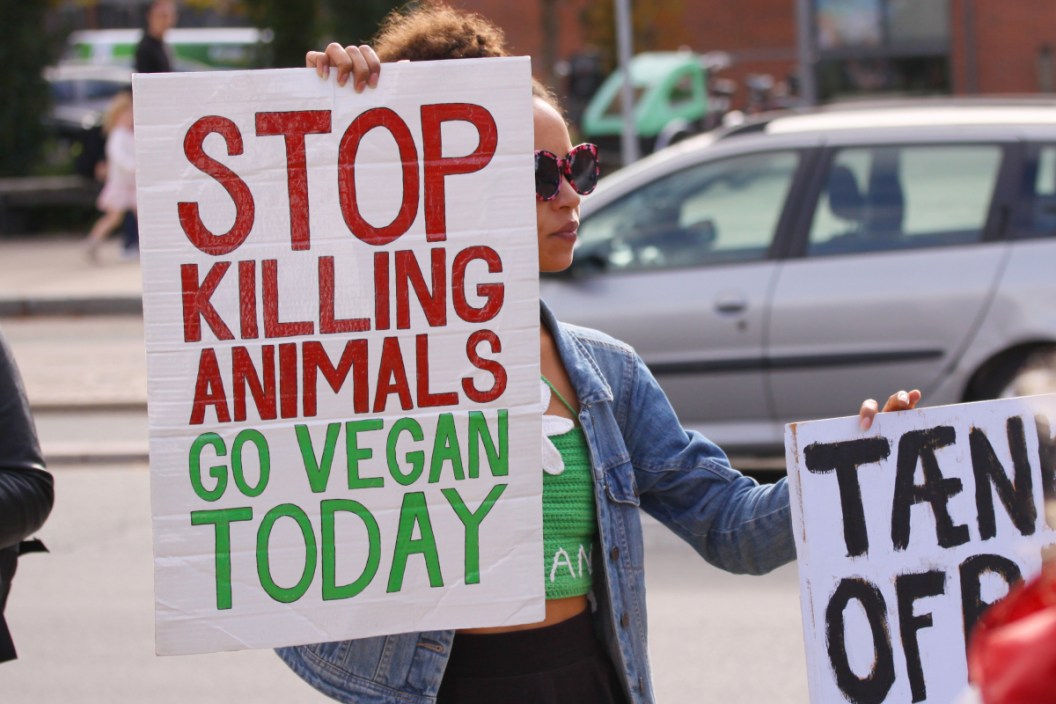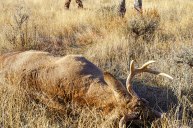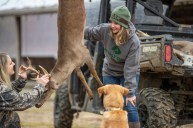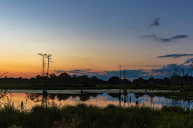Here are some facts to share with the non-hunters in your life.
Times are changing fast, and unfortunately hunter numbers are falling. It's not just in the United States, but worldwide.
It has the hunting industry and wildlife agencies concerned and there is a lot of misinformation out there in the non-hunting public.
I've written in the past that you probably shouldn't be concerned about the staunchly anti-hunting crowd. Most anti-hunters are too far gone to be reasoned with at this point, as should be obvious from their social media accounts.
Our focus should be on educating non-hunters.
When I talk about non-hunters, I'm talking about people who don't hunt or have been shown to really have no opinion on it. Probably everyone has some family members like this.
With that in mind, here are some facts to share to help hunting get a little bit more public support.
1. The resurgence of the wild turkey in Michigan
Humans aren't infallible, and it is true that over-hunting and population destruction nearly wiped out wild turkeys in the Great Lakes State. By the year 1900, many believed there were no more of this iconic bird left in Michigan, a nightmare situation for wildlife conservation.
Thankfully, in the 1950s and 60s, the Michigan Department of Natural Resources began working hand in hand with hunters and other conservation programs to fund the re-introduction of turkeys to their historic habitats. Since then, the population has boomed to hundreds of thousands of birds, and carefully regulated hunting seasons have been put in place to manage the population.
According to the Detroit Free Press, Michigan's turkey seasons have helped contribute nearly $27 million in revenue for restoring the species in the Great Lakes State. And that's just from turkey hunting license sales alone!
Keep in mind, many state wildlife agencies have similar wild turkey success stories, but Michigan is one of the most notable ones.
2. Trophy hunting's impact on Africa
One of the biggest hot-button topics of the last few years has been trophy hunting in Africa. I always like to come back to College Humor's "Adam Ruins Everything" episode on this. Despite the ugly hunting stereotypes portrayed in the video above, Adam does an excellent job of succinctly explaining how the real threat comes not from hunters, but the poachers and habitat destruction.
There is a reason most African Nations welcome the trophy hunters with open arms: the hundreds of millions of dollars foreign hunters bring in for conservation organizations. This money is put back into programs to fund conservation and protect game species that are in decline.
According to Conservation Action Trust, we're talking about $200 million or more in funds generated a year from African trophy hunting. This is money not only helps bolster wildlife populations, but it helps support local economies and public lands through jobs as well.
It has also led to the protection of highly endangered species like the white rhino on private lands in private hunting preserves where many once-threatened animals are now making a comeback.
We're pretty sure PETA isn't pumping $200 million a year into wildlife conservation in Africa.
3. Theodore Roosevelt's long-lasting impact as a hunter
Perhaps the most well-known big game hunter in American history is of course, former President Theodore Roosevelt. It's probably safe to say Roosevelt would not have fared well as a hunter here in the 21st century with all the shaming that comes associated with hunting these days, especially if you're a high-profile public figure.
But you can't deny the man's legacy. He established 150 National Forests and five National Parks including Crater Lake, Wind Cave, and Mesa Verde. He also established the Grand Canyon as a National Monument.
Can you imagine what may have happened to the area if he had not? We'd probably have strip malls and McDonald's restaurants on the rim of the canyon today.
We were lucky to have Roosevelt. He saw before most anyone else what habitat destruction could do to the wildlife resources in this nation. That's why he dedicated so many game reserves and federal bird areas.
In all, he protected over 230 million acres of natural areas that are still open and in use by the public to this day.
Simply put, no one has done more for wildlife conservation then or since. And I've never heard of an anti-hunting group member having a similar legacy of protecting our lands and wildlife. Have you?
4. Hunters on the front lines against feral hogs
Unfortunately, invasive species are a huge problem across the United States. But probably no other state better personifies the problem than Texas. The Lone Star State has a HUGE problem with feral hogs. How bad is it? The Texas Parks and Wildlife Department has pretty much made hog hunting a free-for-all with no season limits or restrictions on how these animals can be hunted.
And that still isn't enough. Feral hogs breed fast; they'll have up to three litters of six to eight offspring a year. Hunters simply can't keep up.
If you're wondering what the big deal is, it's this: feral hogs cause millions in damage every year to crops and property. But even worse, they have a terrible impact on native wildlife populations as the hogs eat up native grasses, flowers and trees.
They also eat the eggs of native birds and have even been known to kill and eat the young of animals like deer and turkeys. They're simply unstoppable eating machines.
Similar wars against invasive species are being fought in places like Florida against invasive pythons and other large snakes that have an equally devastating effect on native wildlife. While many state agencies are engaging in this fight, the only members of the public helping the authorities out in these situations are hunters.
Even then, biologists are estimating hunters aren't shooting enough hogs in Texas as it is. It's hard to imagine how much worse the problem would be if hunters weren't already shooting them in droves.
5. Loss of hunters means loss of jobs and loss of wildlife protection
Probably the biggest impact hunting has is on the livelihood of people. As older hunters increasingly hang up their deer hunting rifle and coat for good, state agencies lose money on licensing fees that go to support the jobs of wildlife officials. This isn't good news for the employees who work for state agencies.
Colorado for instance, has had to cut jobs in recent years simply because they are experiencing declines in the sales of hunting and fishing licenses. But wait, it gets worse. The state had to close a state park and then they had to increase entrance fees to other parks and hunting license fees just to make up the deficit.
One other particularly scary detail to come out of Colorado's financial woes is the cutting of a $1 million program to deal with invasive aquatic species that damage to Colorado's beautiful lakes and streams. The state also had to cut an additional $1 million in capital improvement projects and $1.85 million in fishing and boating programs and programs aimed at habitat protection.
But it isn't just the state and federal agencies that are impacted. It's the local "Mom and Pop's" too. An interesting piece from the California Department of Fish and Wildlife notes nearly 700,000 jobs nation-wide are supported by hunting and that hunters pump an astounding $22 billion into the economy every year, creating an overall greater economic impact of over $60 billion. Who would have thought hunting would have such a ripple effect?
The fact is, without hunting, many people's lives would be adversely affected in ways that aren't immediately obvious on the surface.
Products featured on Wide Open Spaces are independently selected by our editors. However, when you buy something through our links, we may earn a commission.
For more outdoor content from Travis Smola, be sure to follow him on Twitter and check out his Geocaching and Outdoors with Travis YouTube channels.
NEXT: 12 AWESOME PLACES TO CAMP IN MICHIGAN THIS SUMMER
WATCH: MINNESOTA SCHOOLS COULD MAKE FIREARMS SAFETY PART OF PHYSICAL EDUCATION





